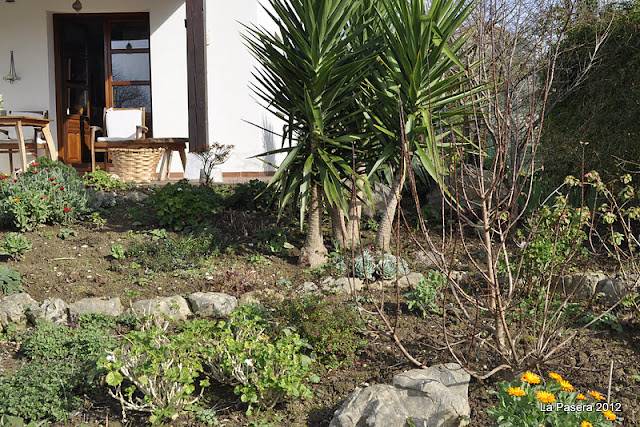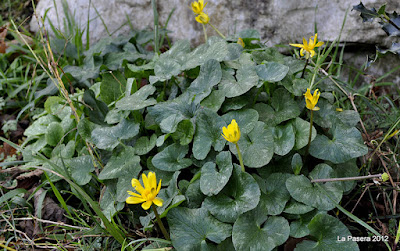The winter months bring plenty of opportunity to assess where you are and where you are going in relation to planting schemes, hard landscaping and garden maintenance. Our grand plan of what we would like to do with the plot haven't changed a great deal over the past 6 years but we have added several extra flower beds and extended the vegetable garden.
Earlier today, we took inspiration from our friend at Mellow Fruitfulness and had a wander around the garden and took the opportunity to take a closer look at what was happening. Mellow Fruitfulness took a container and foraged interesting and colourful items from around the garden. We decided to do the same. If nothing else this allows you to take your time, review the jobs that need to be done and to prioritise them accordingly. The bonus of course is it also allows you to enjoy the warm winter sun, listen to the birds, spot things you might have missed and to daydream about the fast approaching season of Spring.
We did however break the rules by picking one or two flowers (but only on plants/weeds we will pull, move, eat or divide).
This is our haul:
This is our list of urgent jobs:
1. Create raised vegetable beds - wood ordered and to be delivered today - watch this space.
2. Plan the crop rotation for the vegetable garden.
3. Paint the shed - a coat of paint now will help prolong its life we hope.
4. Move several perennial plants that are growing in the wrong place.
5. Split several plants and relocate to other parts of the garden or to friends.
6. Prune/coppice several of the Hazel trees.
7. Regenerate the fedge (picture below).
8. Repair the compost containers as the wood is beginning to rot.
9. Service the equipment - sharpen the chain saw, lubricate and sharpen garden tools, ensure the mower and strimmer are up to a busy season.
10....where to stop!!!
Earlier today, we took inspiration from our friend at Mellow Fruitfulness and had a wander around the garden and took the opportunity to take a closer look at what was happening. Mellow Fruitfulness took a container and foraged interesting and colourful items from around the garden. We decided to do the same. If nothing else this allows you to take your time, review the jobs that need to be done and to prioritise them accordingly. The bonus of course is it also allows you to enjoy the warm winter sun, listen to the birds, spot things you might have missed and to daydream about the fast approaching season of Spring.
We did however break the rules by picking one or two flowers (but only on plants/weeds we will pull, move, eat or divide).
This is our haul:
 |
| Foraged, fruit, flowers, fallen leaves and seed heads |
 |
| Plants to be moved or divided - we need to do it now before the Sprint spurt of growth... |
This is our list of urgent jobs:
1. Create raised vegetable beds - wood ordered and to be delivered today - watch this space.
2. Plan the crop rotation for the vegetable garden.
3. Paint the shed - a coat of paint now will help prolong its life we hope.
4. Move several perennial plants that are growing in the wrong place.
5. Split several plants and relocate to other parts of the garden or to friends.
6. Prune/coppice several of the Hazel trees.
7. Regenerate the fedge (picture below).
8. Repair the compost containers as the wood is beginning to rot.
9. Service the equipment - sharpen the chain saw, lubricate and sharpen garden tools, ensure the mower and strimmer are up to a busy season.
10....where to stop!!!
 |
| Shed, compost bins and the fedge. Some of the Hazel that needs coppicing. |















